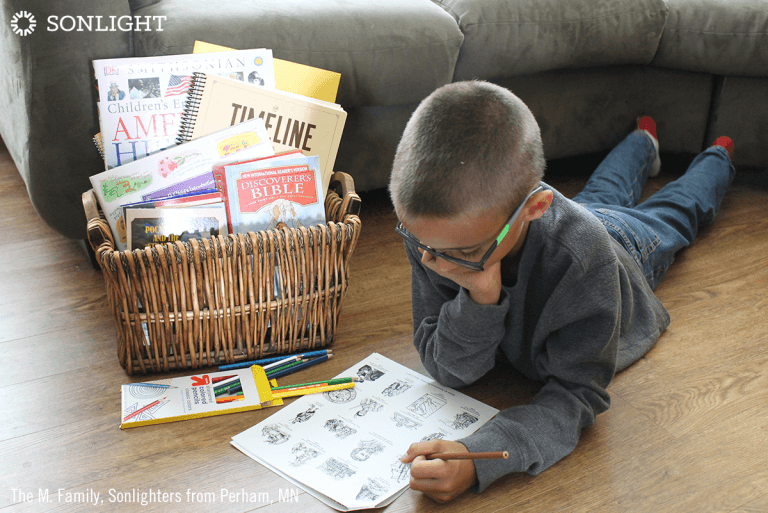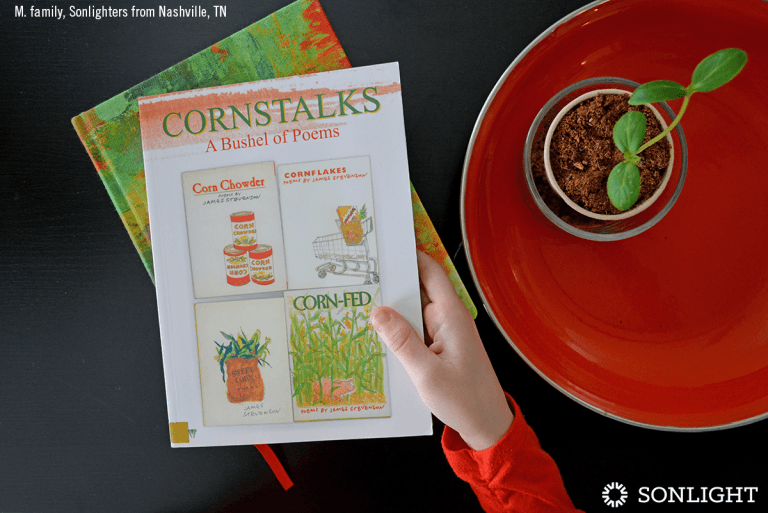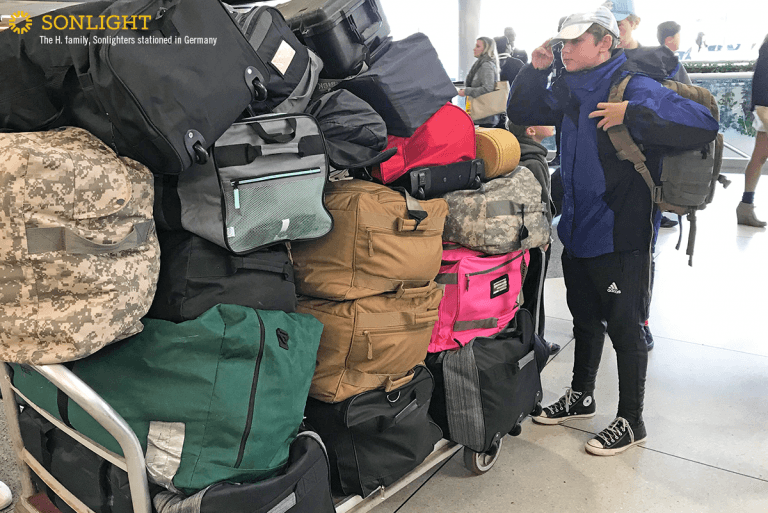
My son has always been one of those boys who simply can't sit still. I mean more than average activity; I mean he is constantly moving! Thus, his diagnosis of ADHD wasn't a huge surprise to me. Official label or not, I knew that to be successful with homeschooling him, I would need to implement engaging hands-on lessons. At the same time, I also wanted to use a literature-based curriculum like Sonlight.
When picturing yourself homeschooling with a pile of books, you envision sitting on the couch, children nestled up to you, listening attentively. I knew this would not be the case with my son, so I would need to find ways to make read aloud time work with his ADHD.
Kids with ADHD Need to Move
One of the many lessons I've learned while homeschooling is to get over my son's need to move his body. Everything about his tendency goes against my nature. I don't need to fidget to learn. In fact, it distracts me from listening. Sitting still comes naturally to me, so anything else seems unnatural.
Truth is, kids with ADHD focus much better when they keep their body moving.
Let me tell you, accepting this fact drove me crazy at times! Early in our homeschooling days, I was constantly saying things like "Sit down." and "Put that down." I thought that if he was pacing around or playing with something, he wasn't listening. If he wasn't listening, he must not be learning, either.
I've come to realize, however, that quite the opposite is true. My son will listen much better if I allow him to do something with his hands during school. Even though it might go against everything I personally experience in regards to paying attention and listening, moving about is actually a benefit for kids like him.

Read Aloud Time
If you are at all familiar with Sonlight, you know the curriculum is literature-rich. This was both a selling point and a concern when it came to my son's ADHD.
The selling point was that I knew textbook-style learning was not working with him. Been there, done that, and it wasn't pleasant.
My concern was one I suspect most ADHD parents have: How in the world are you going to successfully homeschool with a literature-based curriculum while your child is literally bouncing off the walls and furniture?
I used to make my son sit next to me or on my lap during read aloud time. He wasn't enjoying it. Even worse, he had no idea what I just read to him. If I were to ask him questions about what we just read, he would have no clue how to answer. It was frustrating to say the least. Neither of us were enjoying read aloud time until I started to have a better understanding of ADHD.
When I let him do small activities during our American history read aloud time, it made a dramatic difference in his listening and comprehension. I felt he was completely ignoring me, and I had to learn how to accept the fact that he wasn't sitting still. But it turns out movement is key to helping him focus and by extension learn.
Fidget Ideas for Read-Alouds
The thing to keep in mind when allowing your child stay in motion is they don't need to be large movements. Small, simple movements are usually enough to keep my son focused.
Coloring is a great activity to do during reading time, especially when you can find coloring books which reinforce the subject you're reading about. Coloring the timeline figures is another great option.
I'm really excited about Sonlight's addition of hands-on activities to some elementary levels this year. When there are lap book assignments with the day's reading, my son can be working on the cutting while I read.
At other times, petting the dog, playing with small fidget toys, or assembling LEGO is enough to help him focus.
Sonlight Works for ADHD with Accommodations
You might find yourself going through a period of trial and error to see what works for your child. The key here is to let go of your preconceived ideas that children need to sit still in order to be actively listening. We need to allow them some movement.
Trust me. It might take you some time to not be bothered by their movements; however, everyone will be happier in the long run when movement is allowed.











